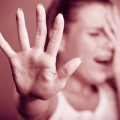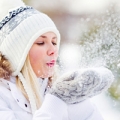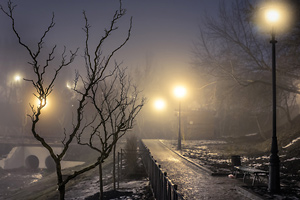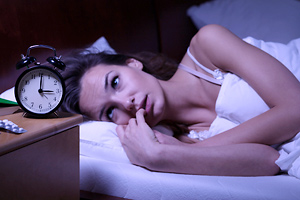Essential Oils For Seasonal Affective Disorder
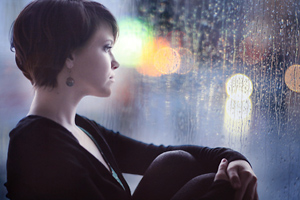 Seasonal Affective Disorder (SAD) is a medically recognised form of clinical depression that typically strikes during the darker winter months.
Seasonal Affective Disorder (SAD) is a medically recognised form of clinical depression that typically strikes during the darker winter months.
Although not fully understood, it is most likely caused by shorter daylight hours which cause shifts in the body’s biological clock and hypothalamus.
It is quite common for many people to get a dose of the ‘winter blues’, but for some people SAD is a seriously disabling illness that totally disrupts their lives.
There are believed to be around two million sufferers in the United Kingdom alone, and a further 10% to 20% of the population also experience mild symptoms that don’t quite meet all of the requirements of an official diagnosis for SAD. That’s a lot of people.
Most sufferers of this condition can be perfectly healthy during spring and summer, but as soon as the darker days arrive in winter they find they are unable to function properly. Thankfully, when spring arrives, symptoms can disappear quite quickly with the arrival of brighter sunlight and longer daylight hours.
The symptoms of SAD
Also known as ‘winter depression’, the effects of seasonal affective disorder can begin to be felt at any time between September and April, and are usually the most severe during November, December, January and February. The main symptoms are anxiety, depression, lethargy, loss of sex drive, mood changes, over-eating and sleep problems. If the condition persists untreated for many months it can often lead to a weakened immune system due to the effects of stress.
People who regularly suffer from this condition can become reclusive and seem reluctant to interact with other people during the winter. They know that they are not at their best and they desperately want to avoid their friends seeing them like this. The continual state of dread increases their anxiety and depression, often sending them into a downwards tail-spin emotionally.
The causes of SAD
The precise cause of seasonal affective disorder is not yet fully understood, but it is believed to be linked to the reduced exposure to sunlight during the shorter days of the year during the winter. A few hundred years ago about 75% of the population worked outdoors in natural daylight, whereas today this figure is down to less than 10%. This can be okay during the summer months when we all see longer daylight hours, but during the winter indoors workers operate under artificial lighting and see little, if any sunlight.
Amazing as it sounds, the natural light we receive through our eyes controls our moods, sleep, appetite, temperature and sex drive. Throughout the winter months many people travel to and from work during darkness, literally not seeing sunlight for days on end. Research has now established that a lack of sunlight can disrupt the balance of the brains chemistry, and it is believed that the combination of long dark winter nights together with the colder temperature contributes towards this depressive disorder.
The science bit
During the hours of darkness the pineal gland produces a chemical called melatonin which makes us feel drowsy and signals the time for sleep. Exposure to sunlight prevents the production of melatonin whilst increasing the production of a neuro-transmitter called serotonin. When seasons change, the circadian rhythm (biological clock) in your body shifts due to the changes in daylight, and this can affect the body’s production of serotonin and hormones. It has been discovered that disruption to the body’s circadian rhythms together with a decreased production of serotonin can trigger depression.
To counter the milder symptoms of seasonal affective disorder you must absorb as much natural daylight as possible, which ideally should be between one and two hours a day. Sufferers of more serious symptoms may need medical treatment such as phototherapy (special light lamps), antidepressants, counselling and psychotherapy. However, traditional antidepressant drugs can actually increase the symptoms of lethargy and sleepiness which the sufferer is trying to overcome!
Essential oils for SAD
To help tackle seasonal affective disorder successfully we should use the essential oils known to uplift and energize together with others that bolster the emotional system. Bergamot, lavender, clary sage and sandalwood are some of the very best essential oils for sleep. Essential oils influence the limbic system, which is the area of the brain responsible for controlling our moods and the body’s circadian rhythm mentioned earlier. This means that we can use carefully chosen essential oils to bring about a changes on all levels to get the very best results.
Choose from the essential oils in the panel according to how you are feeling. There are essential oils to help energise and uplift you, deliver some emotional support for when you are feeling down, and some of the most relaxing oils to help you sleep better. You may find it beneficial to choose essential oils from both the ‘energizing’ and ‘emotional support’ categories; 2 essential oils from each group would make nice balanced, relaxing essential oil blends.
Citrus essential oils have a general cheering and uplifting action on the emotions as well as an energising action on the body, whilst the floral oils work on the more subtle energies to help to fight feelings of sadness, melancholy, or even guilt that may be brought about by seasonal affective disorder. In case you are having trouble sleeping there are also a few recipes to help get a restful night’s sleep too.
All the essential oils listed can be vaporised, used in a bath or diluted in a carrier oil for a nice massage. Be sure to use bergamot FCF essential oil in a massage oil if you intend using a lightbox or sunbed afterward your treatment, since conventional bergamot is photo-sensitising. The positive effects that essential oils have on the emotional system are perfect to help combat the winter blues and re-energize you, especially when combined with any of the conventional treatments.
The conventional treatments for seasonal affective disorder include phototherapy, medication, ionized-air reception, cognitive-behavioral therapy and carefully timed supplementation of the hormone melatonin. If you think that you are suffering from Seasonal Affective Disorder you should consult your GP to eliminate the possibility of any other medical conditions, as well as seeking his advice on suitable treatment.
Copyright © Quinessence Aromatherapy Ltd 2022. Written by Sue Charles

